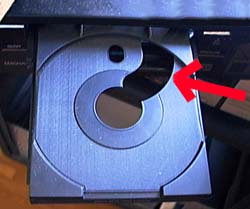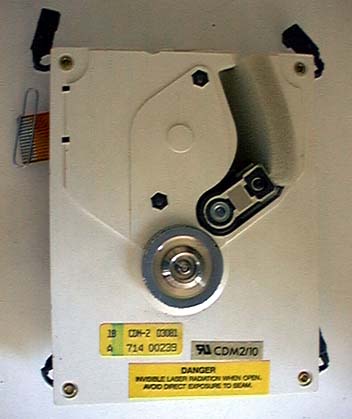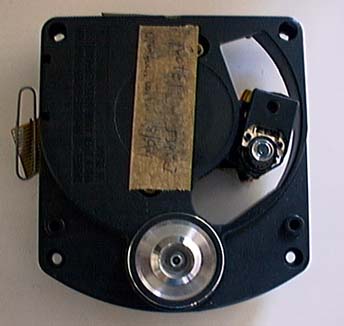The Philips CD player Swing-Arm Mechanism
The best CD mechanism made (IMO)
I worked as a professional home audio repair technician in the San Francisco Bay Area of California from 1981 until the first week or so of 1995. During that stint, my specialty was home CD players (not portables, which our shop refused to service).
Far and away the best tracking, most reliable CD player mechanism during that time was (and likely still is) the Philips Swing-Arm mechanism, used mostly in Philips and Magnavox CD players, plus those from other manufacturers who use Philips mechanisms and circuitry (B&O, McIntosh, Studer/Revox). The high-end professional version (not pictured here; made on a metal base chassis) is commonly found in public CD jukeboxes and similar applications where reliability is paramount and failure is undesirable and expensive.
Used to be, in the 1980s, that virtually everything with either the Magnavox or Philips name which had a CD mechanism had a variant of the (usually) wonderful swing-arm mechanism, from the dirt-cheapest Magnavox home unit to the highest-end Philips. All of them worked about as well in terms of tracking and reliability, and all came highly recommended by me.
Starting in the late 1980s, some of the Magnavox models started substituting a cheaper Japanese/Asian CD mechanism for the patented, exclusive swing-arm mechanism. As the years went by, it became more and more difficult to guide prospective buyers to the true, good swing-arm mechanisms, and away from the garbage generic mechanisms being sold under the Magnavox name. In the early 1990s, i gave up, and started recommending Technics (or Panasonic, or other Matsushita brands) instead. While not as wonderful as the swing-arm Philips machines, they ran a decent second, and were substantially better than the generic Magnavox models, and slightly better than most other brands.
Last i checked, the findings above all held true. For those who wish to seek out the real Swing-Arm mechanism, here are some photographs to help you with the process:

While there is no 100% guarantee, nearly all tray-loading Swing-Arm mechanism players that i have seen will have loading trays with a semicircular cutout as pictured above, denoted by the red arrow. Other shapes usually mean a standard linear-motion pickup is being used.


Two different CDM swing-arm mechanisms (CDM is the mechanism model prefix). The white CDM-2 mechanism is shown with a foam shipping pad in the semicircular cutout in which the laser pickup assembly (close to the platter) normally swings freely. The important items to focus upon are the shape and size of the semicircular cutout, the appearance of the laser pickup assembly, and the fine points of appearance of the disc platters (compared to other platters, not shown here, that one will see).
While other details often vary, these are consistent enough that developing an “eye” for them will help anyone out shopping for a new CD player pick a true swing-arm mechanism player. All it takes is opening the tray, and peering inside. Top cover removal is even better, though it must be noted that other large loading mechanism parts will obscure the views denoted in these two pictures.